- News
- Reviews
- Bikes
- Accessories
- Accessories - misc
- Computer mounts
- Bags
- Bar ends
- Bike bags & cases
- Bottle cages
- Bottles
- Cameras
- Car racks
- Child seats
- Computers
- Glasses
- GPS units
- Helmets
- Lights - front
- Lights - rear
- Lights - sets
- Locks
- Mirrors
- Mudguards
- Racks
- Pumps & CO2 inflators
- Puncture kits
- Reflectives
- Smart watches
- Stands and racks
- Trailers
- Clothing
- Components
- Bar tape & grips
- Bottom brackets
- Brake & gear cables
- Brake & STI levers
- Brake pads & spares
- Brakes
- Cassettes & freewheels
- Chains
- Chainsets & chainrings
- Derailleurs - front
- Derailleurs - rear
- Forks
- Gear levers & shifters
- Groupsets
- Handlebars & extensions
- Headsets
- Hubs
- Inner tubes
- Pedals
- Quick releases & skewers
- Saddles
- Seatposts
- Stems
- Wheels
- Tyres
- Health, fitness and nutrition
- Tools and workshop
- Miscellaneous
- Cross country mountain bikes
- Tubeless valves
- Buyers Guides
- Features
- Forum
- Recommends
- Podcast
TECH NEWS
Shimano Road Disc camp: day 2
Another day in Sicily, another chance to have a play with Shimano's new road disc system. This time it was a lumpy 50km loop north of Zafferana where we're staying: more time on the system and more varied terrain for testing, although sadly the weather remained fine and dry. We were disappointed about that, as you can imagine.
A bit more detail on the brakes first. These first-incarnation hydraulics from Shimano are Di2-only because the master cyclinder (Shimano use the same mineral oil as they do for their mountain bike brakes) sits in the space where the mechanical shiftgear used to go. Behind a shiny silver cover.
Pop that cover off and things become a bit clearer. The cylinder itself sits towards the rear of the unit, and the brake lever extends up behind the cover to pivot in a similar position to other Shimano STIs, so the feel of the lever arc is very similar. That screw on the front of the lever allows you to adjust the reach for smaller hands.
There's another screw around the side of the lever body, which lets you adjust the bite point of the brakes. Screw it right in and it's more aggressive, or let it out for a longer throw.
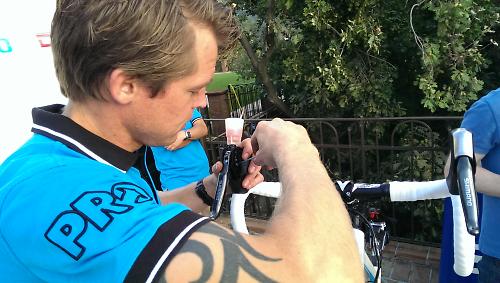
Magnus from Shimano took us through the bleed process for the discs, which anyone who's bled one of the current crop of Shimano's mountain bike discs will find very familiar. The system is bled from the bottom up, to give any air trapped in the components a greater chance of escaping. The basic procedure is to introduce mineral oil at the calliper, which is then pushed through the system and collected in a funnel that you attach to the lever. Pushing 20ml of oil through (the amount the closed system contains) is normally enough to get rid of any trapped air. You have to be careful to keep the oil off the brake blocks (for obvious reasons) so Shimano recommend removing them and putting a plastic block in their place. Everything you need for a full bleed is contained in a kit that's available from Shimano.
If you need to replace a hose, for instance to move the brakes to another frame, then the road hydraulics use the same hoses and connectors as their mountain bike counterparts.
One thing worth pointing out is that the BMC bikes that the brakes were attached to are using 160mm rotors. This isn't because Shimano recommend a 160mm, but because 140mm – which they do recommend – isn't a post mount standard at the moment and there aren't many bikes and forks available.
Shimano aren't concerned about heat build up causing the system to fail. That's one of the things they've spent a lot of time on, including pushing test pilot Tim down the Stelvio with a diver's weight belt taking his body mass up to 130kg.
For the callipers, Shimano are using Ice-tech pads which have been available on mountain bikes for some time. The pad is bonded to an alloy carrier which extends out of the brake and into a series of cooling fins to help disspiate the heat generated by braking. In fact the whole calliper is borrowed from mounatin biking, pretty much: it's basically an XT unit.
Ice-tech rotors are also used. These comprise two steel braking surfaces with an alloy layer sandwiched between. The alloy conuducts heat much faster than steel and moves the heat away from the rotor and into the alloy carrier that attaches the disc to the wheel.
That alloy layer also extends from the inner circumference of the disc into a series of cooling fins, something that Shimano call Freeza. The combination of pads and rotors means that braking temperatures are reduced by up to 150°C compared to steel discs and non-finned pads. And that means that Shimano are confident that 140mm rotors are plenty for most riding, although they do suggest that heavier riders might prefer the increased stopping power of the larger 160mm ones.
Yesterday on the first test of the brakes I found them to offer good power and modulation, but they were pretty noisy. Through the second day's ride the pads started to bed in and the amount of screeching lessened considerably; by the end of the day the front brake was pretty much silent and the rear (which I use a lot less) was starting to calm down too. Given that they've only had about 90km of riding from new, that's acceptable. I'd expect them to stop squealing after maybe 150km of dry riding, much less in filthy UK conditions which bed discs in a lot quicker.
When your disc brakes are noisy there's two processes going on simultaneously in your brain. On the first hand you want to brake as effectively as possible, and on the second you want to do things that stop the brakes from making too much noise, in your reserved British way. So although the noise doesn't greatly affect the function of the brake, it cann affect how you use them.
With the noise diminishing, using the brakes was a much more pleasant experience, and I found that the ability of the front brake to scrub off speed on the twisty descent into Linguaglossa was such that I barely used the rear. It brought me up sharp when a van decided to overtake a parked lorry and squeeze us into a two foot gap between his tyres and a wall made of lava, too. So that's good. On the more stop-start run through the coastal town of Giarre they were very well behaved; they have a sharper bite than most discs I've used on the road but it's not unpleasant, just different. And you can adjust the lever feel to a certain extent too.
It didn't rain or snow, and it wasn't muddy, so I can't really comment on the all-weather performance of the brakes, which is a shame because that'll be one of the primary reasons that people will want to buy them. But once we have a set down in the West country there'll be near-endless opportunitites to put them through their paces in filthy conditions. And I'm looking forward to doing so.
Obviously the new discs are Di2-only so we've been running them with new 11-speed Ultegra Di2: the next report will focus on that.
Dave is a founding father of road.cc, having previously worked on Cycling Plus and What Mountain Bike magazines back in the day. He also writes about e-bikes for our sister publication ebiketips. He's won three mountain bike bog snorkelling World Championships, and races at the back of the third cats.
Latest Comments
- OldRidgeback 2 hours 41 min ago
I cycle most days and have never contributed to the economy of Maidenhead either. I can't say I've ever actually been there and I live in London. I...
- David9694 3 hours 11 min ago
Police, firefighters and paramedics at Staffordshire smash as 4x4 left in ditch...
- David9694 3 hours 14 min ago
Jolly Farmers pub in Forncett Saint Mary closed after crash...
- dodgy 4 hours 45 min ago
Hard to reconcile the asking price of this, with this https://road.cc/content/tech-news/quintana-roo-unveils-new-all-speed-aer...
- Secret_squirrel 4 hours 49 min ago
I've used Armourtex in north london if you're willing to Powdercoat. Great job. https://www.facebook.com/armourtex
- bluezurich 5 hours 19 min ago
Cycling.Today has you covered for free. Tiz does as well but the moderation over there is a bit facist. Well, a queen mod rules it so it's a...
- chrisonabike 5 hours 52 min ago
Well, on one of my uprights I have a mirror mounted but it is really too small / fitting is not secure enough. I find I just don't use it. On...
- Hirsute 7 hours 34 min ago
This highways roadwork protection vehicle should have been wearing hi viz https://www.bbc.co.uk/news/articles/clyer0ny3x7o
- matthewn5 9 hours 23 min ago
The ugliness is the dealbreaker for me.
- Simon E 9 hours 41 min ago
I'd put in a nomination for the Cateye Viz range....

























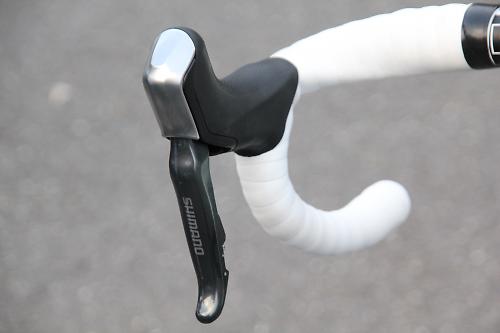
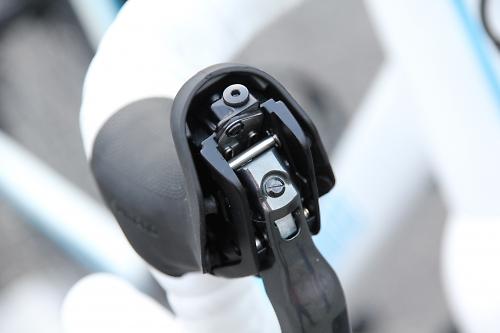
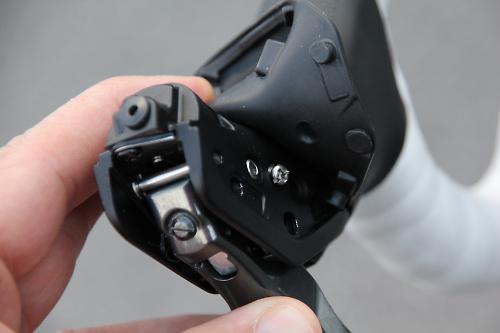
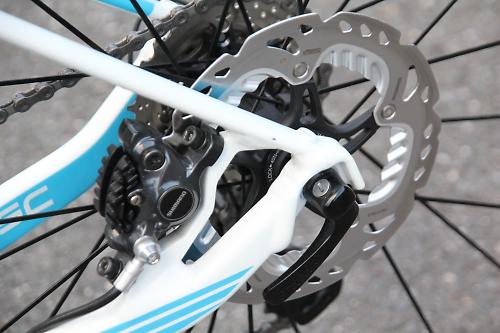
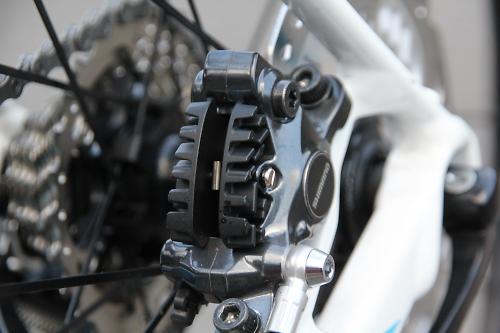

Add new comment
35 comments
My wife's new bike has disks, mostly becausee it's full-custom and I could. But, a secondary benefit specific to the disks has come up.
Her hands are small, and even with the levers adjusted all the way in, with a standard caliper, she doesn't feel like she can get enough braking power from the hoods. So, she always has to do heavier braking in the drops. The extra power of the disks (Alfine Di2 drop-bar levers on TRP Spyre calipers/XTR 160mm rotors) allows her to brake confidently from the hoods.
It's not a race bike, and I'm not planning on doing disks with any of my race bikes, but I'm a lot more open to considering it for her based on the unforseen benefits that came with the disks.
I love the reactions to disc brakes on road bikes. Its a very simple split.
People who've used them love them.
People who haven't, think they're a waste of time.
I'm running Shimano R505 discs on my On One 'cross bike. Mainly to reduce rim-wear and have a pimp black wheelset (black hubs, spokes, nipples and rims). Also for greater braking power riding a loaded bike in crap conditions, the bike was built for the LEL this year. The amount of times I out-braked people into corners, especially on wet roads, on big descents simply amazed me
They just work.
Can't wait to justify buying hydraulic/Di2 setup in the future.
As for bleeding, I've got XTs on one mtb and Hope M4s on another. (I've had Hope C2s, and minis, and Shimano Deore and SLX in the past too). Its a dead easy job that needs to be done every couple of years.
And for wheel-changes, never a problem with pad alignment. There's always the option of going tubeless to reduce the number of times you'll actually need to take the wheel out.
Not true I'm afraid.
I love the disc brakes on my commute/touring bike, especially in wet weather with big grippy 35mm tyres and have been using them for the last 6 months.
I don't think they are a waste of time anywhere but for road racing they could be a hazzard.
In the middle of a road race bunch I would feel much less safe with disc brakes. Your statement "The amount of times I out-braked people into corners, especially on wet roads, on big descents simply amazed me" provides a nice justification for not using disc brakes in racing. Whilst trying to win a race every rider also relies on every other rider to get around safely - outbraking except in very rare circumstances (such as the final corner into a finishing straight) doesn't win races.
Road race bunches are not like sportives or group rides; road racing involves riding very quickly in very close proximity and quite often in a large bunch of 80+. There is no way to see and anticipate hazzards from the middle of a large bunch so the braking is frequently the first indication of a hazzard. If the brakes are more effective then the reaction time is reduced.
Bear in mind also that in racing there is a relatively small contact patch and on wet roads even with rim brakes it is pretty easy to apply too much braking force causing skidding which can have serious repercusions for other competitors.
There seem to be many people who talk about the benefit of disc brakes in bunches and often experience from group rides and sportives are quoted to back-up the benefits and in those situations but few comments from those with significant road racing experience - which is fine except perhaps that such experience is pertinent when looking at the UCI stance on disc brakes.
Blimey, it does all seem to get a bit emotional whenever anyone mentions discs on road bikes - a bit like discussing Rapha or helmets... [hides]
Not quite. I've used discs plenty - both cable and hydraulic, on a mountain bike and a cross bike (which also had a set of road wheels and got a fair amount of road use before it got nicked). I like them when they work well, but always found them more faff than a road caliper. I can't stand rubs, squeaks, squeals and anything else of that ilk - and I always found my discs to require more maintenance to keep them running squeal and rub free, simply because the tolerances are tighter.
I'd be interested in road discs for my winter bike purely based on performance - a lot of winter riding is done with wet and muddy roads, and discs work better in those conditions, as well as saving on rim wear. My only issue is that I've got some lovely handbuilt wheelsets, and I don't want to ditch the nice hubs in order to fit discs. Since I don't have a huge issue with calipers, I'll probably stick with them just to keep using those wheels.
On the summer bike(s), the calipers win. They are lighter and more aero, true, but the difference isn't game changing. It's just that, in better conditions, I've never found the performance of a caliper to be lacking. I can stop very sharply, locking up a wheel is well within the limit of my strength, and I don't have any issues with modulation. So why would I ditch good wheelsets for something which doesn't offer a useful (to me) increase in braking performance but is less aero and heavier? Well, I wouldn't. But someone else might - because they have one bike for all conditions, because they want the extra braking power, or because they just like to have the latest tech.
Much like most technological advances, road discs have their place. So do calipers. No need for everyone to get all upset about it...
I use discs on my commuter. Before I switched to a bike with disc brakes I'd be getting through four sets of caliper blocks a year and a rim every year or so. In between time I'd have very inconsistent braking in wet, greasy or cold weather.
Discs have been a revelation.Modulation is fantastic and doesn't really change from one end of the year to another, so you have much more control over the wheel speed, and thus of how the bike handles.
Consistent performance at the brakes means that I am much more reliant on the tyre's performance to stop me or to control the potential to slide. In other words, the braking performance is now down to how well I brake and how well the tyre grips, rather than the brake's ability to stop or control the rotation of the wheel itself.
Maintenance for me has involved bleeding the front brake once and the rear twice in 3 years and a set of disc pads every 9-10 months (at £8 for the complete bike).
If you wanted to speed up wheel changes, they could introduce a pad retract button and physical guides at the caliper to help guide the rotor into that gap. Otherwise it's not really any different to threading a wheel into conventional calipers, just the calipers are in a different place.
from the part 1 article "Modulation of the power is excellent and it was a very rare occasion that I locked up the back wheel into a hairpin"
I've never really understood what modulation means and if it is anything more sophisticated than "feel" - I currently run a bike with BB7 cable discs with the good reason that gives me more controlled braking in poor conditions - but yesterday as a car tried to turn left across me as I moved at a reasonable speed - I locked up the rear and had an "oh s..t I shouldn't have done that" 5m or so skid while fortunately staying vertical and pointing left - I might be a crap rider but can think of a few times I've locked up a wheel (not just with discs) when reacting to unexpected obstacles - so here's the question - surely the big plus for hydraulic brakes should be elimination of lock up - ok so you get more consistent braking and no overheating rims but surely a "new technology" should sort an "old" problem?
wheel changes: while taking your wheel out of the frame and sticking it back in again is rarely a problem in my experience, swtiching to another wheel introduces a new set of variables and the tolerances are tight with discs. So, for the pros, it's likely to be something that needs careful consideration. For the club run, where you're just pulling your own wheel out to stick a new tube in and then putting it back, much less so. especially when frame and fork manufacturers move to thru-axle designs which have tighter tolerances than a QR.
Melting discs: yup, i've seen the forum threads and tests concerning melted Ice-Tech rotors too. The version they're using for the road, with cooling fins, isn't currently available in road sizes, only 203mm and (i think?) 180mm in the Saint groupset. I haven't heard of those ones melting, but i'd be interested if anyone has.
Hmmmm, certainly an interesting phenomenon. Not brand-specific either.
Well, I'm stumped and I agree if this does happen to the pro bikes then it will certainly be a strange sounding peloton.
I have to say, I've never encountered the alignment issue mentioned above after removing/replacing wheels on my mountain bikes. I even used to run the great big Hope DH4 calipers and even though they were difficult to set up initially, after that wheel changes were simple. If everything is tight and secure, you should be able to slide them in and out all day (Ooh er!)
UNLESS
You pull the lever when the wheel is removed. That can cause the automatic pad wear adjustment to leave the pads compressed and only a slither of space to try to get the rotor back in.
Does the 'shinging' continue for a long time, or is it just until a few good squeezes to seat the pads back into place? Could it be that the wheel isn't fully back in the drop-out? Are you running QR skewers, or bolt-through?
Sorry for all of these questions, I'm just genuinely interested about this problem- it shouldn't really happen.
I've no problem discussing it. That's why I asked.
It's with qr's. Haven't had issue with bolt thru on my fs.
It's happened with avid, shimano and tektro. If I'm doing something wrong then I'd rather know. That said I've seen plenty of others do it (can think of Hayes and Promax users it's happened too) or maybe I've got an ear for things. Twice I've 're-adjusted bikes that have left a shop like it (after work on them).
It's not a major issue but knowing how annoying that slight 'brush' of disc and pad can be.
Thanks.
Just to add, lever not touched.
Happened with hydro and cable discs.
Old calipers, not running perfectly smoothly in their seals, I know my XTRs do ping a bit on occasion, they seem to find somewhere to settle that isn't always where i would like it to be! Change the pads, some aftermarket pads are thicker and as a result lever throw is hampered, on which point, how much do aftermarket ICEtech pads cost!!! compare to Campag or Shimano caliper pads!
"Everything you need for a full bleed is contained in a kit that's available from Shimano."
In the old days, of course, the bleeding bleed would have come in the in the box with the equipment! There's progress
As to the above comment on melting the alu core of Shimano discs...
Those people need to stop dragging their brakes and use them correctly!
So the fact that some users need to scrub speed constantly, say descending a 1:4 hill rather than let it run and then find out they can't stop when the car comes the other way is the USERS fault!
Users are users, manufacturers have to accept that somethings are the way they are, some people aren't happy descending at 40-50mph, some users need to keep speed down due to the road surface, etc etc.
I've been running road BB7s on my work bike/tourer for 10 years, and I wouldn't consider anything other than discs for utility use. The big advantage for me is easier maintenance and better reliability for year round commuting. It's great not grinding away your rims and covering the bike in brake crud in the winter.
I don't see a convincing case yet for performance road use. Good calipers provide plenty of stopping power, and there is still a weight/aerodynamic penalty for discs. I'm sure that will change as the manufacturers continue to develop their products.
BB7s can still be a bit fiddly to set up properly, and they corrode badly in winter. Ideally I would like a fully hydraulic set up, but solutions like the Di2 Shimano are still too pricey, so I'm going for the new TRP Hy-Rd cable/hydraulic system.
I got bored half way through reading the brake bleed procedure. Seems a hell alot of hassle just to stop at a t junction which caliper brakes do very well. Sounds like a disc brake road bike will send more time at the local bike shop than been ridden.
You don't need to bleed the system to stop at a T-junction - stop trolling.
No it doesn't - it sounds like you've decided what you like and to hell with anything that goes against that, even if that means reality taking a back seat to prejudice. Sheesh - round wheels must have a been a real tough sell to some folk....
Guessing you're trolling here...
Disc brakes have been on MTBs for >10 years. I can count the number of times I've had to bleed my own brakes (mix of Hope and Shimano on various MTBs) in that time on the fingers of one hand. And that's for MTBs which get ridden in all kinds of crap.
Discs are literally set up and forget. Never need to adjust pads, replace a cable, account for cable stretch, clean the rims to get better braking. Replace pads once a year (probably less), maybe bleed the system once every 2-3 years.
Compare that to the caliper rim brake pads on my commuter bike which need replacing every 6 months...
Been riding riding a Croix de Fer for 2 yrs now, does that mean I'm ahead of the curve?
For most people discs are better than calipers. Better braking, lower maintenance, less wear parts.
It's not like wheel changes can't go wrong already but I think you will find nice pro modals with a guide to get the disc in the right place with a quick shove. Not dissimilar from the guides on most brake pads. Not sure if a rubbing/ringing/squeaking disc on up to 200 riders is good for the riders sanity though!
I for one cannot wait for disc brakes and my next road bike will definitely have them (might be a while before I can afford a new one though).
I rode a hybrid with hydraulic discs as a commuter bike all year round and I loved it. I don't recognise any of the downsides people mention (although I accept looks are subjective).
When do they officially launch?
Given there are an increasing number of reports where people are melting the alu inner core of the shimano rotors during prolonged (MTB) braking, i'm still slightly concerned about 140mm rotors.
All this nonsense about fast wheel changes with disc brakes - I do a lot of mountain bike racing and never have any problems getting the wheel in with the disc, in fact I find it easier than my road bike with caliper brakes, as you don't have to flick the release lever on the caliper to move the pads out
And another thing, I rode the new Canyon Inflite disc cyclo-cross bike in the Kinesis Hell of the West event, 90km around Dartmoor. I had seven punctures. I can comfortably confirm that I had no problems with getting the wheels in and out
One last thing, why all the concern with how the pro peloton will change wheels in a race? Are you guys all professional cyclists or something?
Nonsense? Really? So asking a question is now nonsense. As a member of the road.cc team that is a very sensible reply. Well done! You must be proud of yourself.
As for the 'concern' - none. Just interested as I have various bikes and find disc brakes can take a little longer to line up. It's no bother to me but would think it might be in road race type situation. Of course without interest (or comments) then sites like this would be pointless.
Lets hope its easier to bleed than most set up's just now. Looks simple enough.
But as said above, try removing the wheel and getting it in quickly....
Not that it is ever going to feature in the pro peloton for at least another 5 years anyway
Informative write up. Thanks.
Regarding that disc brakes are the solution to carbon rims overheat during prolonged braking with rim callipers.
Disc brakes are surely not the only solution.
Cars have been using carbon ceramic brake discs now for many years. One of the main strengths is their ability to dissipate heat so much better than iron discs that there is no brake fade whatsoever.
.
Pages